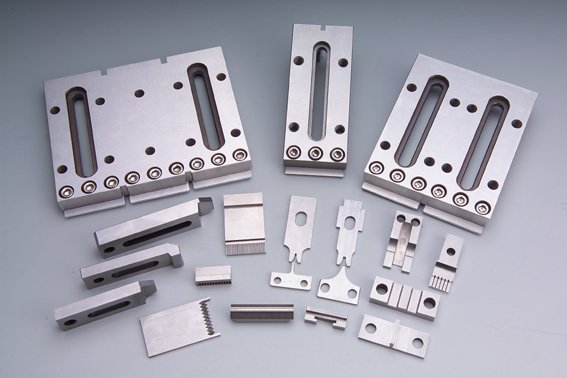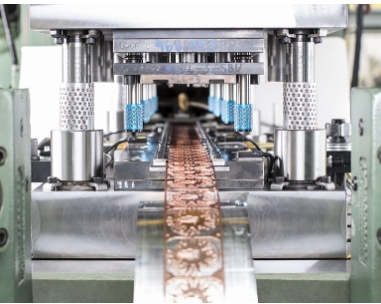Metal stamping stands as a cornerstone in manufacturing, transforming sheet metal into diverse shapes and forms with efficiency and cost-effectiveness. From automotive components to household appliances, its applications span across various industries. In this piece, we embark on a journey through the metal stamping process, exploring its key steps and techniques aimed at achieving precision and quality.

Unlocking the Metal Stamping Process
Material Preparation: Prior to stamping, meticulous material selection and sourcing are imperative. Various metals like steel, aluminum, and copper offer unique properties influencing the final product's characteristics. Once the suitable material is secured, it undergoes preparation in the form of coils or sheets, primed for the stamping press.
Tool and Die Setup: This pivotal step revolves around meticulous design and engineering. Skilled professionals craft dies, specialized tools essential for shaping the metal. These dies are meticulously tailored to match the desired product design, ensuring precision throughout the stamping process. Tooling preparation entails die assembly, alignment, and calibration to optimize performance.
Metal Stamping Operations: Metal stamping encompasses an array of operations shaping the material. Blanking cuts the outline of desired parts from the metal sheet, while piercing creates holes or perforations. Forming molds the metal into desired shapes, and bending achieves angled or curved features. Coining applies high pressure to create precise, intricate details, and deep drawing pulls the metal sheet into a die cavity to form complex, three-dimensional shapes.
Secondary Operations: Following primary stamping operations, secondary processes refine the parts further. Trimming removes excess material, deburring eliminates sharp edges or burrs, and hole punching or notching creates specific features required for the final product.
Inspection and Quality Control: To uphold integrity, inspection and quality control are paramount. Dimensional accuracy checks verify parts meet specified measurements, surface finish evaluation ensures desired texture, and defect detection eliminates any flawed parts, maintaining high quality standards.
Techniques Employed in Metal Stamping
Progressive Stamping: This progressive die stamping technique, ideal for high-volume production, involves consecutive stamping operations performed in a progressive die. As the metal strip progresses through the die, each station performs a specific operation, gradually forming the desired shape. It offers cost-effectiveness, reduced material waste, and increased production speed.

Transfer Stamping: Suitable for complex parts or low- to medium-volume production, transfer stamping involves transferring individual metal blanks from one station to the next for various stamping operations. It allows flexibility in handling larger or thicker materials, enabling production of intricate parts.
Deep Drawing: Employed for cylindrical or box-shaped parts with significant depth, deep drawing pulls the metal sheet into a die cavity using a punch, shaping it into the desired form. It offers excellent material utilization, enabling creation of seamless, hollow structures.
Blanking and Piercing: These techniques focus on cutting shapes and creating holes in the metal sheet, respectively. Blanking removes desired shapes, while piercing creates openings or perforations, often utilized as primary operations before further forming or assembly processes.
Coining: Precisely creating intricate details, coining involves applying high pressure to the metal between specially designed dies, shaping the material with extreme accuracy. It is commonly used for precise embossing or decorative elements on products like jewelry or high-end consumer goods.
Troubleshooting in Metal Stamping
Despite meticulous planning, challenges may arise during stamping, such as material fractures or misalignment. A systematic approach to troubleshooting is crucial, identifying root causes for effective solutions. Techniques like adjusting press settings or optimizing material properties can resolve many stamping issues, enhancing production efficiency.
In Conclusion
Mastering the metal stamping process demands a comprehensive understanding of its steps and techniques. From material preparation to tool setup and stamping operations, each stage plays a crucial role in achieving precise and high-quality parts. Techniques like progressive stamping, transfer stamping, deep drawing, blanking, piercing, and coining offer versatility and efficiency, shaping the future of product development and innovation across industries. With meticulous quality control and problem-solving approaches, manufacturers can overcome challenges and enhance their stamping operations, ensuring continued reliability and cost-effectiveness in manufacturing.







